CAPPARIS
Capparis Tourn. ex L., Sp. Pl. 503. 1753; Gen. Pl. ed. 5: 222. 1754; Benth. & Hook. f., Gen. Pl. 1: 108. 1862; Boiss, Fl. Or. 1: 419; 1867; Hook. f., Fl. Brit. India 1: 173. 1875; Pax. & Hoffm. in Engl. & Prantl., Natur. Pflanzenfam. ed. 2, 17b: 172. 1936; Parker, For. Fl. Punj. ed. 1: 19. 1918 (Reprint 1973); Jafri, Fl. Pak. @ eFloras.org p. 4.
Small trees or shrub, erect, often climbing or sprawling; glabrescent or pubescent (mostly young twigs). Leaves simple, rarely absent; stipules mostly modified into stipular spine, sometimes foliaceous or wanting. Flowers solitary or in axillary or terminal racemes, corymbs or umbels, often showy, bisexual; bracts caducous. Sepals 4(-5) in 2 series, free or connate basally, subvalvate or imbricate, often unequal, sometimes the adaxial sepal more or less deeply saccate, inner pair of sepals always free, flattish. Petals 4(-5), imbricate, often unequal, obovate. Stamens (5-)20 to many, inserted at the base of gynophore, exceeding the petals, glabrous; androphore absent. Gynophore usually equalling the stamens. Ovary globose or cylindrical, usually 1-locular, 2-8 parietal placentas with few to many ovules; stigma sessile. Fruit baccate on a more or less thickened stipe, globose or cylindric, indehiscent, pericarp leathery. Seeds 1-many, embedded in pulp, obliquely reniform.
144 species
Capparis decidua
Capparis decidua (Forssk.) Edgew., J. Proc. Linn. Soc. Bot. 6: 184. 1862; Engl. & Prantl., Natur. Pflanzenfam. 3(2): 231. f. 139. 1891; Jafri, Fl. Pak. @ eFloras. org; C. aphylla Roth., Nov. Pl. Sp. 238. 1821; Parker, For. Fl. Punj. ed. 1: 19. 1918. (Reprint 1973); C. sodada R. Br. in Denh. & Clapp., Narr. Afr. App. 225. 1826; Hook. f., Fl. Brit. Ind. 1: 174. 1875.
A glabrous straggling shrub to small tree with leafy or leafless green crooked spiny branches, up to 4+ m tall. Leaves present on young twigs, alternate, sessile or subsessile, 5-15 mm x 1-3 mm, linear-oblong, acute, spine-tipped, caducous; stipular spines ca. 5 mm long, straight or slightly curved. Inflorescence a few-flowered raceme, corymb on short lateral branches or flowers solitary. Flowers ebracteate, pedicellate, pedicels 1-1.5 cm long, slender, 1-2 cm across, usually brick red or shades of pink or yellow, hypogynous, bisexual. Sepals 4, petaloid, puberulent 5-8 mm x 3-5 mm, in 2 series, ovate-oblong, upper one distinctly saccate, often with floccose-ciliate margins. Petals 4, free, imbricate, about as long as sepals, puberulous, upper pair slightly larger and hidden in the saccate sepal. Stamens 10-15, inserted at base of gynophore, 1.1-1.5 cm long, red in colour. Gynophore nearly equalling stamens. Ovary ca. 2 mm in diameter with ca. 1 mm long beak, 1-loculed with 2-6 parietal placentas, with few to many ovules; stigma sessile, obscure. Fruit a globose berry, 10-17 mm in diameter on a slender stalk, slightly beaked, glabrous, deep red when ripe, pericarp thin. Seeds many, embedded in pulp, reniform, 2-5 mm in diameter.
Common Names: Bare Caper, Caper Berry, Leafless Caper Bush; Karir, Pichu, Teent, Tenti, Karil, Kair (Hindi)
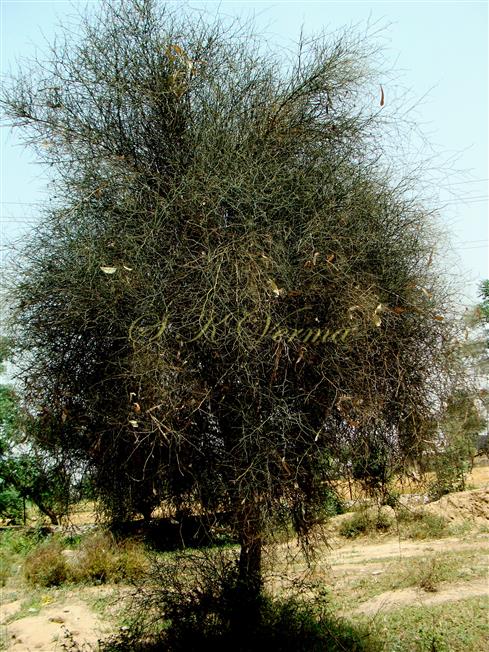
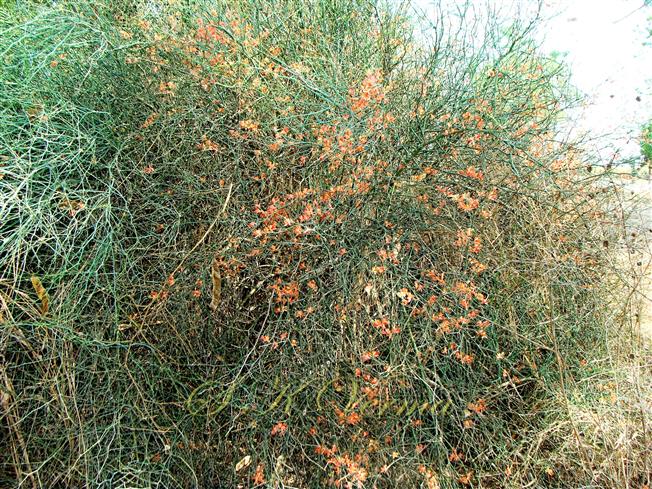
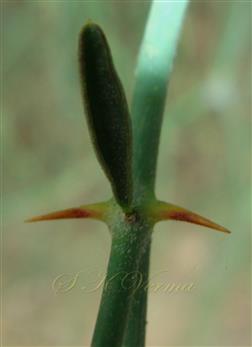
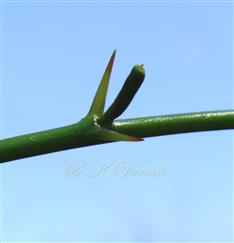
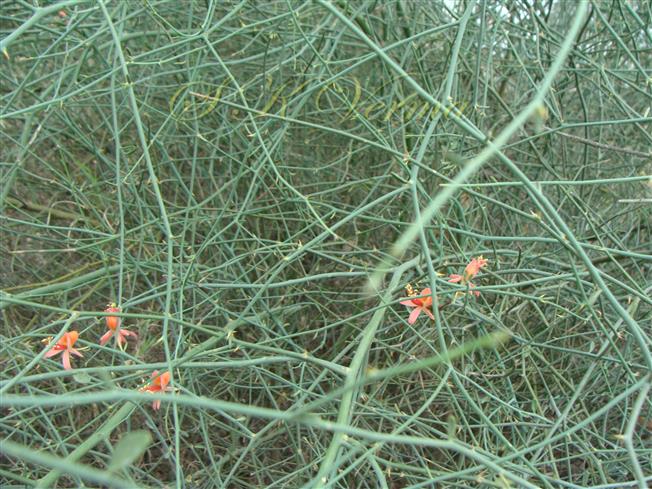
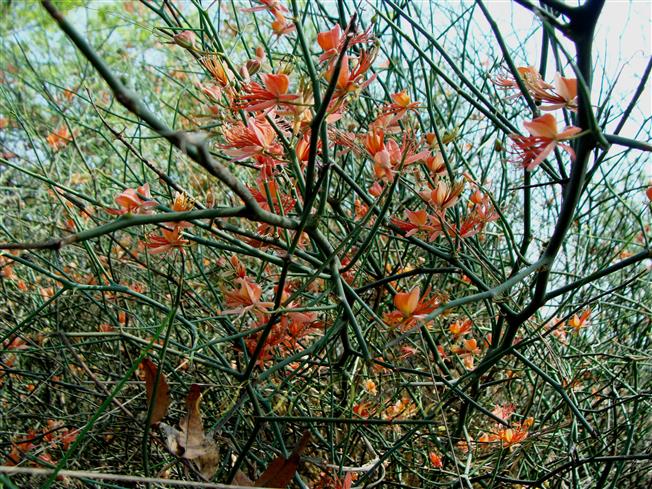
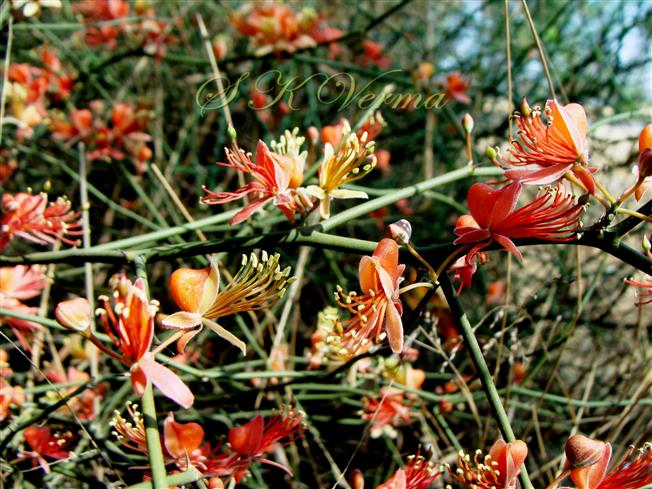
-DSC09927.jpg)
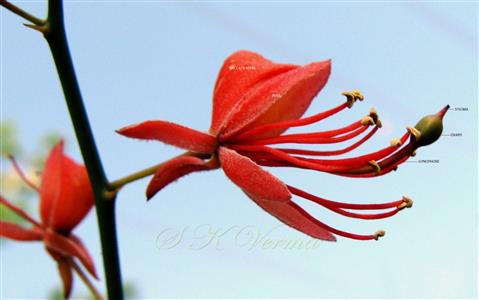
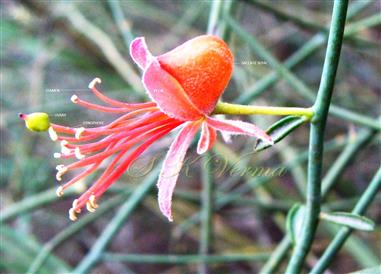


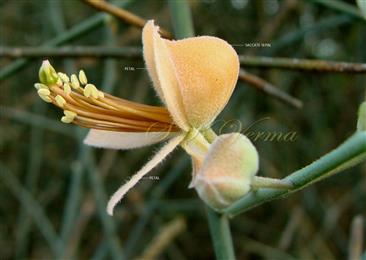
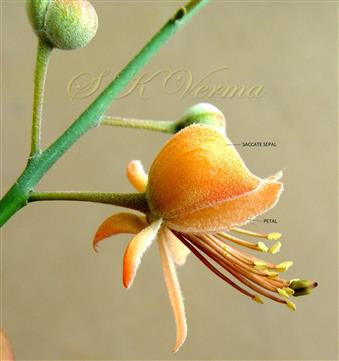








-DSC09927.jpg)





